Before the introduction of the PCC car, there were a couple of honest attempts at a standard for street railway equipment. In 1918, the J.G. Brill company produced the Birney Car, a cheap little single-truck box that aimed at being economical for street railways big and small. However, the Birney was quite bare and uncomfortable, and never quite had the national spread that another streetcar did. It never claimed to be a "standard" national streetcar, but its innovative and adaptable design made it not only widespread in America, but across North America and even the world. Though it may appear antiquated compared to the sleek, stylish curves of a PCC, there is no denying the impact and influence of the Peter Witt streetcar, a Cleveland original.
-----
The GC Kuhlman Company - A Brief Overview
| Gustav C. Kuhlman, the Teutonic Top Lip of Trolleys (Coachbuilt) |
The Gustav C. Kuhlman Car Company (Kuhlman for short) started humbly under the care of its namesake and his father Frederick, one of many German immigrants to stake a claim in populating the state of Ohio. An 1880 census revealed Mr. Kuhlman and his father listed as "sawyers", and the family made a name for itself in the business of fine carpentry. Eager to advance their business, the younger Kuhlman led the way to horsecar construction in the mid-to-late 1880s, as did many other carpenters and fine woodworkers. With the boom in streetcar construction, Gustav established his namesake car company in 1892 at two former carbarns at Broadway and Aetna streets. By the turn of the century, the plant grew and moved closer to the New York Central tracks in Collinwood, Cleveland, and in 1901, the rival J.G. Brill Company of Philadelphia, PA, bought a majority stake in the Kuhlman Car Company. Brill allowed Kuhlman to continue making cars under their own name while Gustav retained a continued presence as a design consultant, leading the company into the diesel railcar business as well as expanding streetcar production. Before he died in 1915, one of the last projects Gustav Kuhlman entertained involved the manic ramblings of one of his most loyal hometown customers; little did he know, this one idea would change streetcar design forever.
Peter Witt's Big Idea
/cdn.vox-cdn.com/uploads/chorus_image/image/56738081/capitol_hill_streetcar.0.jpg) |
| This Seattle streetcar of the West Side Street Railway perfectly shows the "standard" design up until the 1910s. (Seattle Curbed) |
In the early 1900s, streetcar companies were trying to move away from the outdated, and small, horsecars around the country. As a testament to their tiny size, a normal horsecar could only fit 20 people like sardines, so companies like Brill and St. Louis Car simply combined two cars into one for a longer electric car. This may have solved the initial problem of passenger capacity, but as cities grow, so did rush hour loading times. Interurban roads could get by loading people on multiple cars, but attempting the same on a small streetcar resembled more the later fad of stuffing one's self into a Volkswagen Beetle or a telephone booth. Worse still, a conductor had a rough time trying to collect fares as their standard practice was to walk up and down the car, checking individual fares either when the car is stopped or in motion. This all led to delays at "dwell times", IE stop times, and put the responsibility of fare collection on the crew, which inevitably led to cheated fares and labor disputes when crews would do more while being paid little or less. Both the introduction of the "Pay As You Enter" car in 1905 and the low-floor center-entrance streetcar in 1913 helped advance streetcar design, but street railways still wanted an easier way to get people on-board and for the cars to remain on schedule.
 |
| A 1909 stock share of the Pay As You Enter Car Corporation, which invented the car in 1905. (Public Domain) |
| Peter Witt at left, with Former Mayor Tom L. Johnson at Center and Mayor-Elect Newton D. Baker at right. Amazingly, not a moustache between them. (Teaching Cleveland) |
 |
| Mr. Witt's original design patent for the streetcar that eventually bore his name. The car was majority bench seating up front, with row seating in the back. (Picasa) |
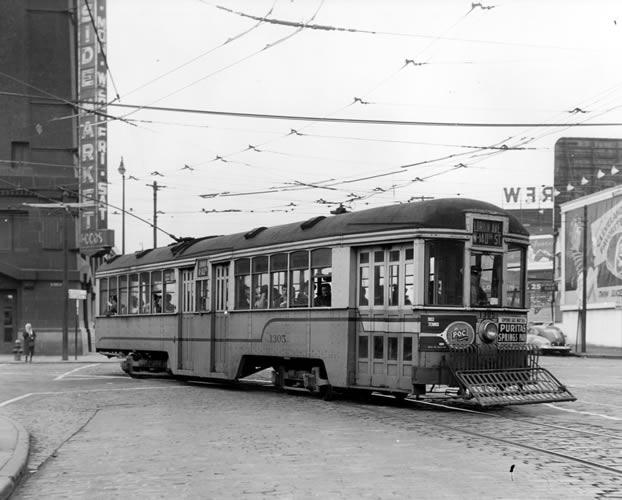 |
| A later Peter Witt, 1305, on Cleveland rails. Note the continued use of an Eclipse Safety Fender, commonly referred to as the "people catcher". (Cleveland Landmark Press) |
The Peter Witt in America
 |
| A standard, later-era Peter Witt car for the Baltimore Transit Company, featuring a flatter roof and squared-off front end. (Tripadvisor) |
Altogether, 14 American cities from Baltimore to Los Angeles employed the Peter Witt car in some fashion. Some, like the Chicago Surface Lines, used 100 "sedans" to bolster their enormous fleet of Pullman cars, while others like the Baltimore Transit Company and Philadelphia Rapid Transit (who ordered 525 cars between 1923 and 1926) employed them heavily on rush-hour lines. The sideways seating in the front and front-facing seats in the rear precluded the standard city bus seating that would become the norm, all to maximize passenger loading. Not all Peter Witts were alike on the outside, as over time many changes were introduced to make them safer or to update their style. Some even received unique, and often incongruous, letter boards, such as Detroit and even Cleveland. The octagonal front end was squared off by the 1930s, adapting a modern style shared with the smaller, end-entrance "Brill Master Unit" that were employed in Philadelphia and Portland, Oregon. Over 2000 Peter Witt streetcars roamed America's street railways from their debut in 1915 to the usual end of streetcar service in the mid-late 1950s.

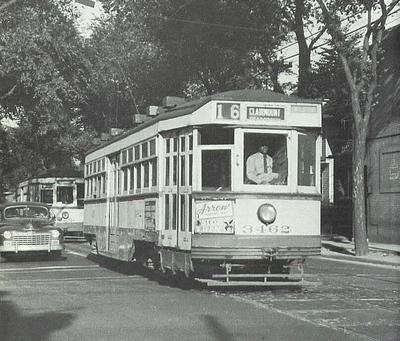
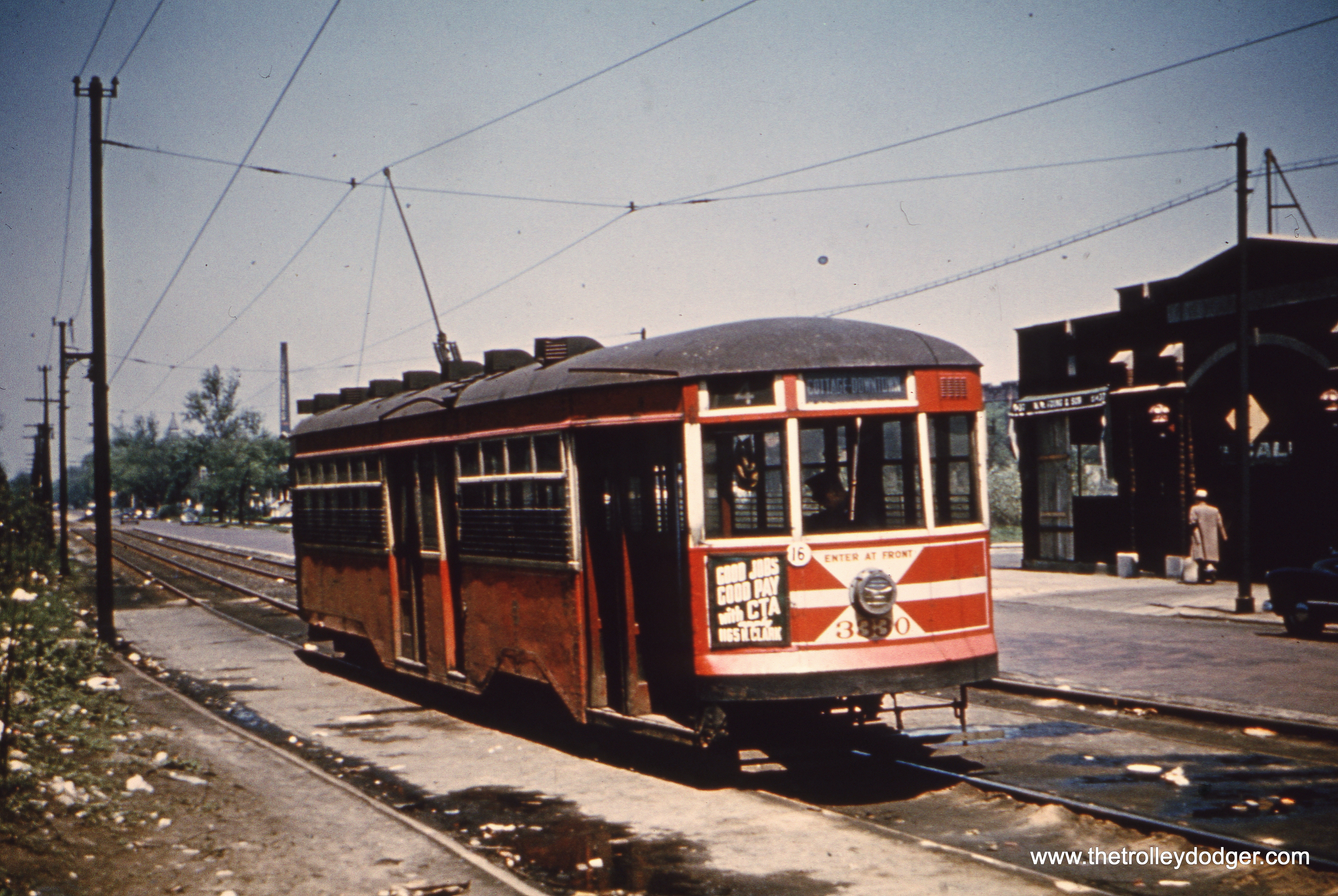

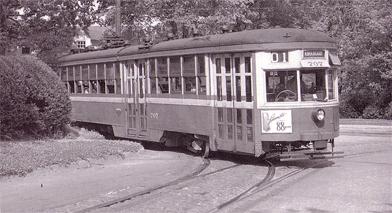
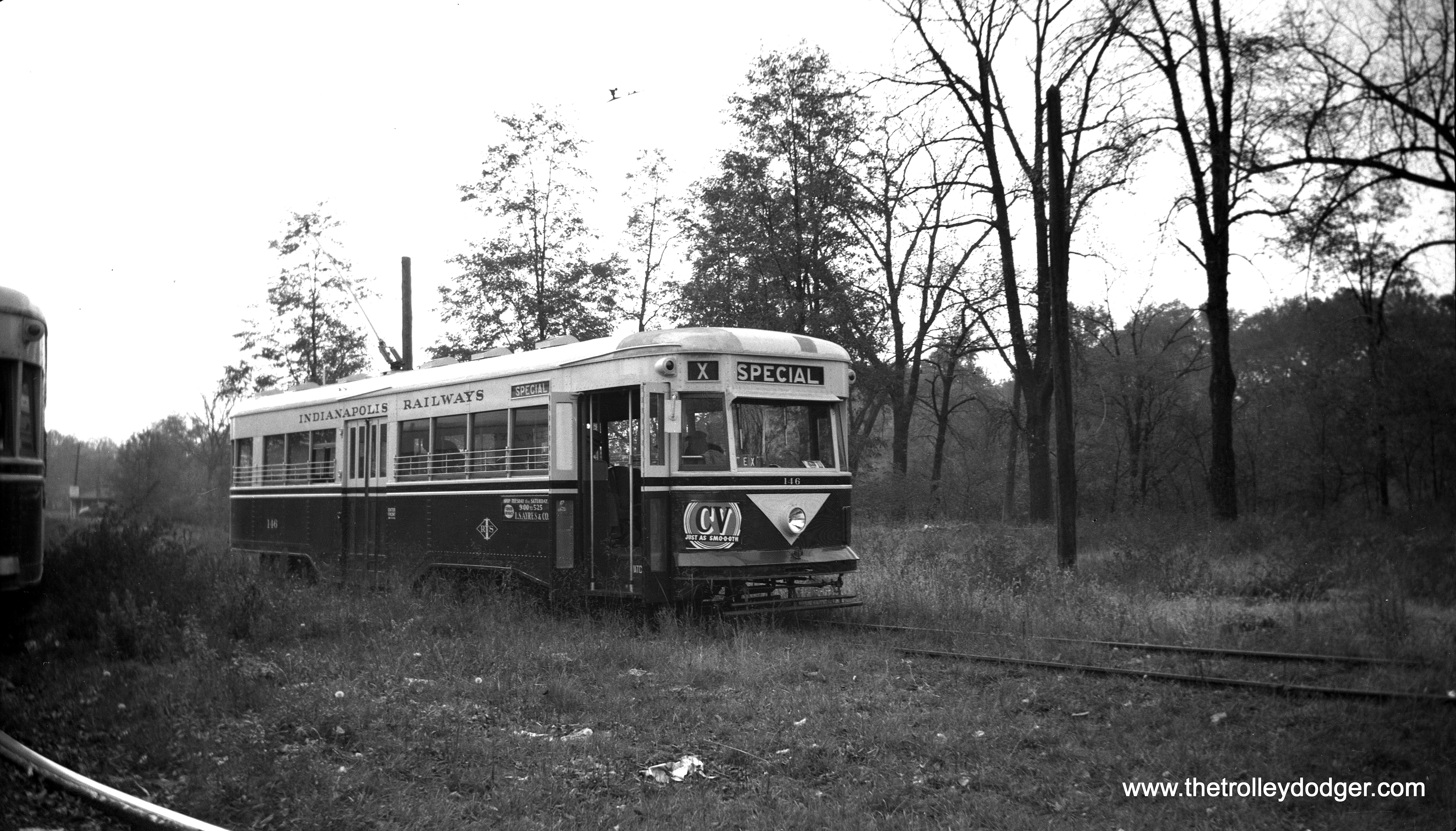
 |
| A small smattering of Peter Witt streetcars from around the United States, with examples from (left to right, up to down) Philadelphia, Detroit, Chicago, Dallas, St. Louis, Indianapolis, and Brooklyn. (Mitchell Libby, AtDetroit.net, Trolley Dodger, Ken Fitzgerald, Trolleyville, Trolley Dodger, Dave Klepper) |
| LARy Type M No. 2601 in preservation, wearing Los Angeles Transit Lines "Salad Bowl" colors. The severe overhang is evident. (Myself) |
The Peter Witt Around the World
 |
| A schematic of the "Small Witt" after significant rebuilds in 1937. This is the only type that survives. (Transit Toronto) |
One of the first big customers for the Peter Witt was the Toronto Transit Commission (TTC), which ordered 575 cars from 1921 to 1923. The cars were split into two classes, the "Large" and "Small" Witt, along with a number of purpose-built trailers (of two or three doors). The "Large" Witts were 51 feet, 10 inches (52 feet for the original Brills) while the "Small" witts were 47 feet. The reason for the small Witts was due to TTC ordering them at a time when the system was being re-tracked, and the company wanted two lengths to cover any kind of clearance. Each car and trailer set could sit 113 passengers (58 in the Large, 51 in the Small and 60 in the trailer), with 140 being the maximum "crush" capacity, and those numbers were vital as the Peter Witts were put to work on the busy Bay and Yonge lines. While they served Canada dutifully, the new subways rendered them obsolete and reduced the Witts to retirement by 1965, with all but ten going to the scrapyard.
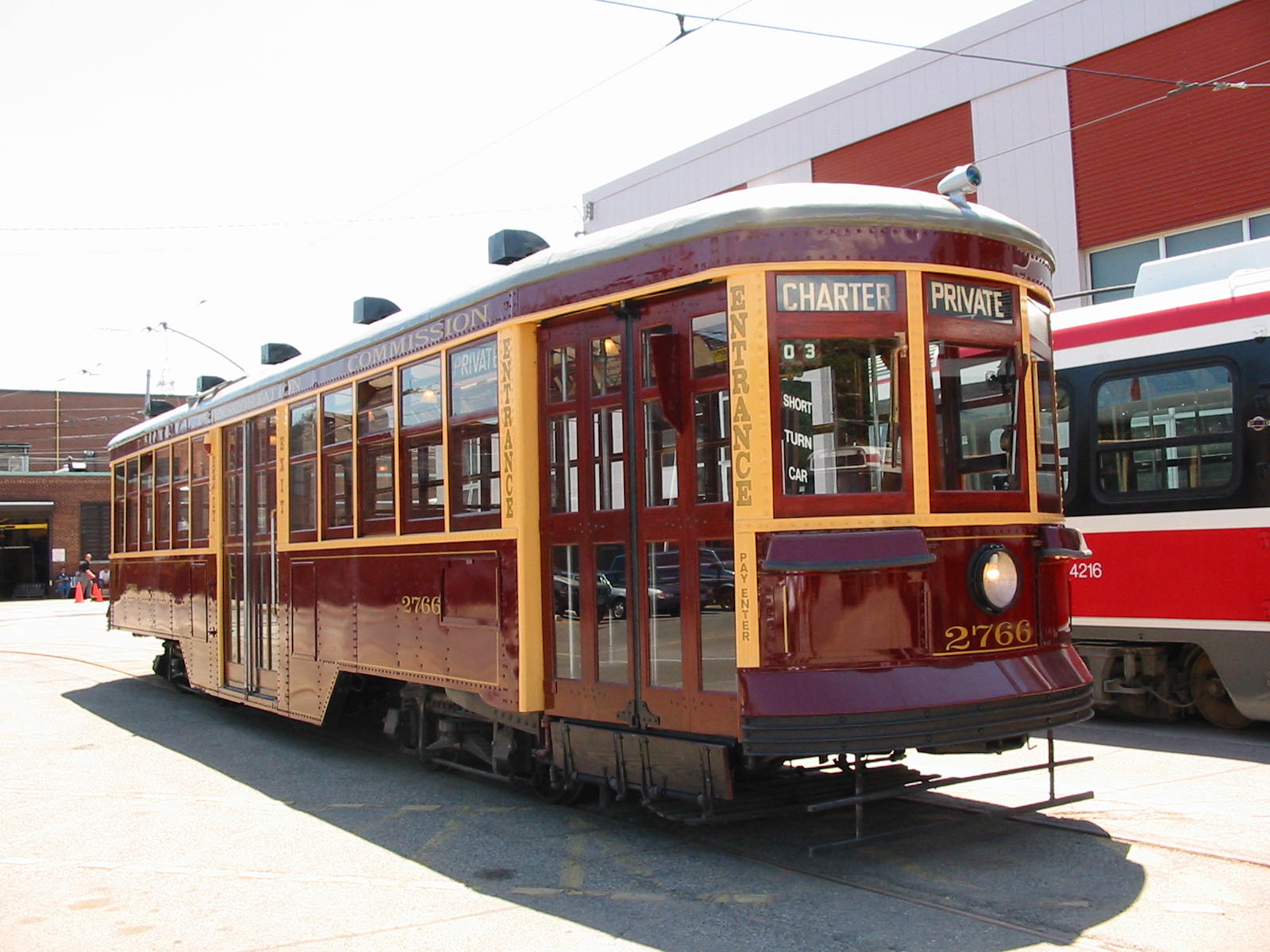 |
| The only surviving TTC-operated Peter Witt, Small Witt No. 2766 on heritage charter duty. (Narcity) |
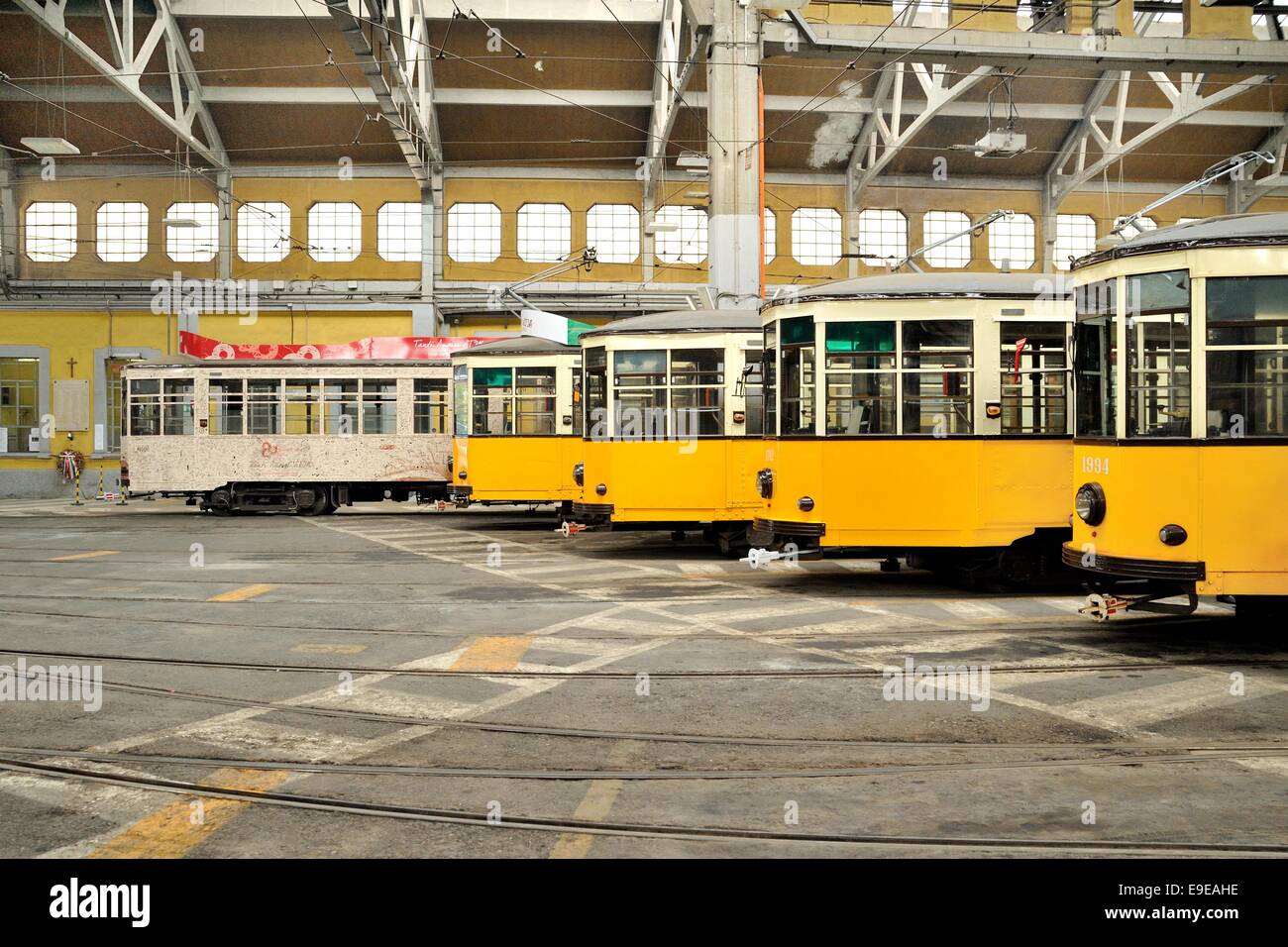 |
| A carbarn full of Milanese "Peter Witt" cars with one undergoing rtestoration on the far left. (Alamy Stock Photo) |


An as-built Neapolitan Peter Witt from 1932 on the left and the rebuilt Peter Witts on the right. Quite the stark difference.
(Public Domain, Henrik Boye)
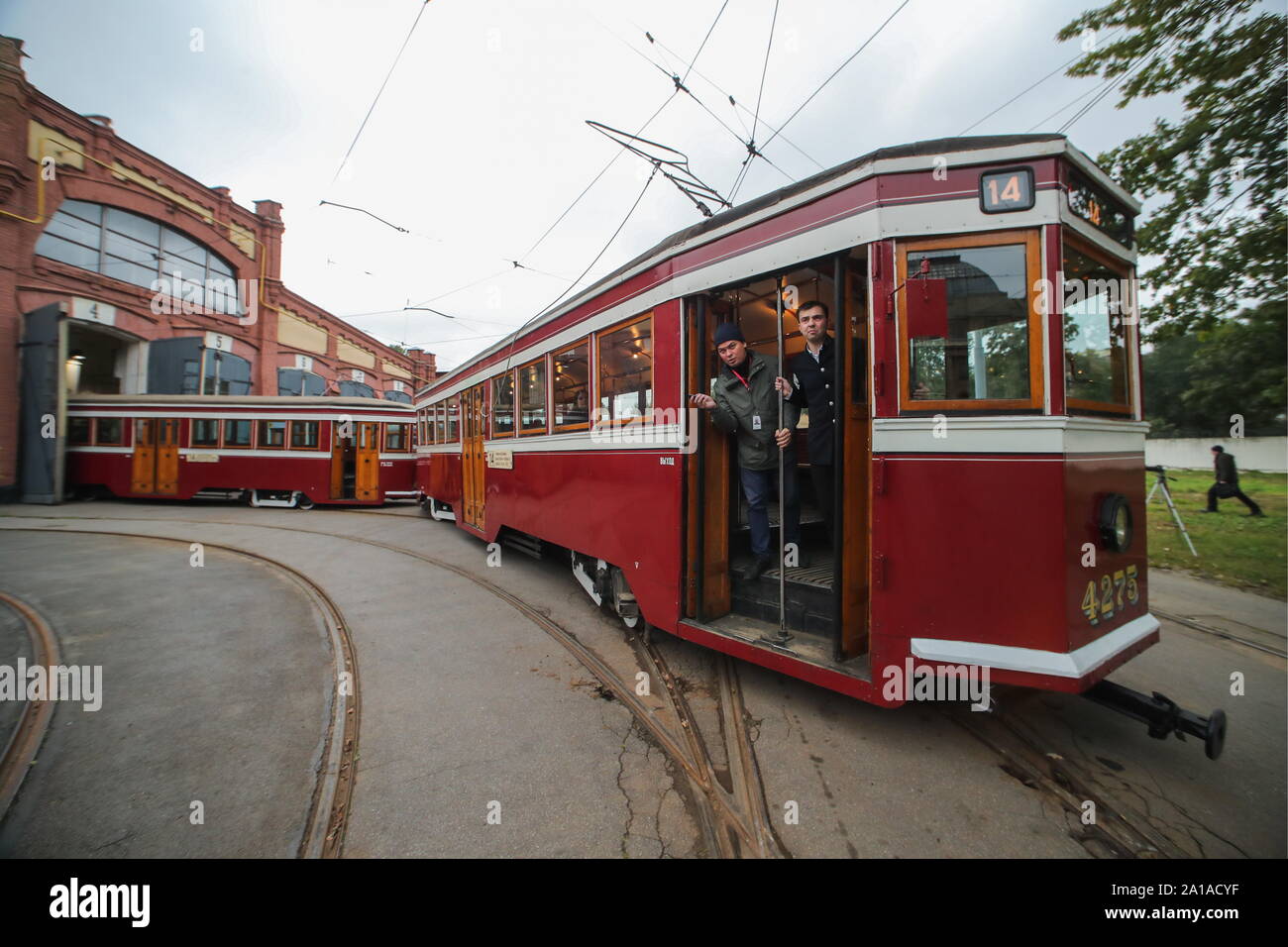 |
| A surviving LM-33 and LP-33 emerge from the St. Petersburg Electric Transportation Museum. (Alamy Stock Photo) |
Most surprising of all was the Peter Witt ended up as another American technology reverse-engineered in Soviet Russia. During the 1930s, engineers from Leningrad toured the United States under designer D.I. Kondratyev and returned to Russia to adapt the Peter Witt for themselves. Classified as the MA-33 ("Model American", and PA for the trailer), the trams were more popularly known as the "Amerikanka" ("American Lady") and combined both the Toronto designs and the Milanese designs as well. The cars had three doors (front, center, rear) all-bench seating, a single end with a rounded wooden slat bench in the back, a conductor's compartment, and even a trailer for rush hour service. 232 cars exited the Petersburg Tram Mechanical Factory between 1933 and 1939, and lasted in service until 1979. For political reasons, the name was later changed to "LM" (Leningrad Motor) and "LP" (Leningrad Passenger trailer). Two LM-33s survive in St. Petersburg, along with one trailer, and are undergoing continued restoration.
The Little Streetcar that Did, and Still Does
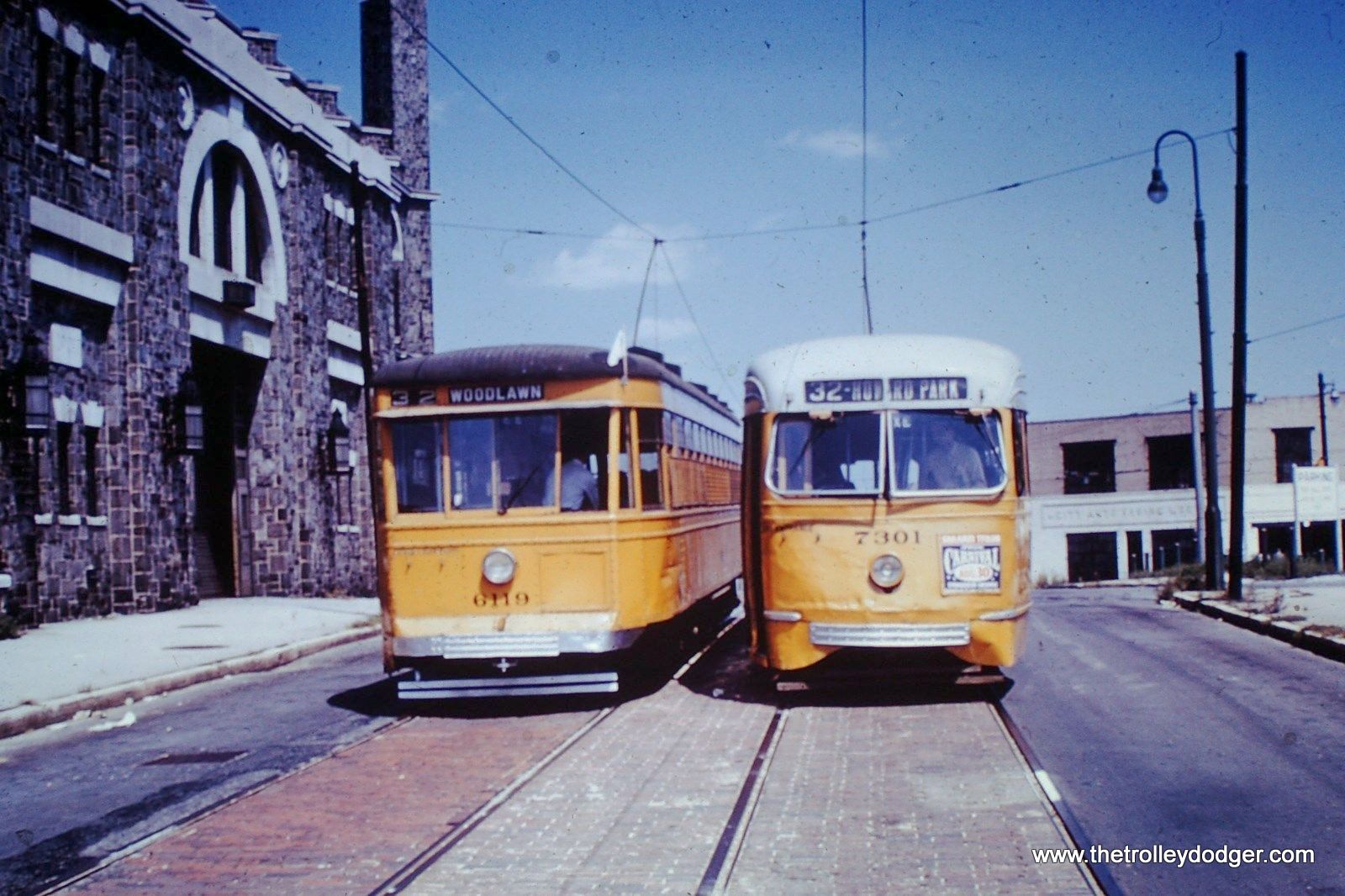 |
| A Cleveland Peter Witt shares a loop track with a PCC car in the late 1930s. (Trolley Dodgers) |
For all the innovation and loyal service the Peter Witt brought to both the companies that owned them and the people who rode on them, one thing it could not stop was progress. The new PCC car introduced one-man operation to many streetcar systems, eliminating a separate conductor and enforcing an entrance fare for streamlined operations. Some systems tried to one-man their Peter Witts, but even they began to look outdated compared to the comfort, style, and smoothness of the PCC. Despite many in the United States and Canada being sent to the scrapheap, in Europe the Peter Witts proved that they had so much more to offer. Naples rebuilt its Peter Witts to match the modern Tatra trams (ironically based on the PCCs) and gave them longer working lives than ever imagined. Granted, they look nothing like the 1930s originals, but even when you look at them today, you're basically looking at a tram that's almost 80 years old. Milan's cars still see revenue service as well, with a dedicated shop force keeping the fleet modernized for years to come.
 |
| 7 of the 11 Milanese Peter Witts arriving in San Francisco in the 1990s. (SFGate) |
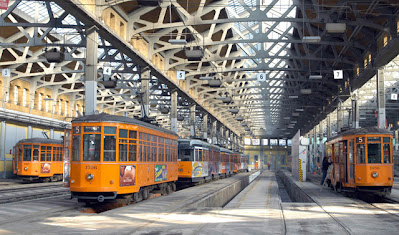 |
| Viva Peter Witt. (Milano bon ton) |
-----
It's not very often that I get to talk about a single design of streetcar, but I can assure you, dear readers, that more episodes like this will feature in the far future. If you would like to learn more about the Peter Witts, you can read a more in-depth history on the Toronto Peter Witts (and I'll cover the TTC as a whole next year), a biography of Peter Witt, and more information on the G.C. Kuhlman company. More information on the equipment cited can be found through the Illinois Railway Museum, Southern California Railroad Museum, Edmonton Radial Railway Society, Hoosier Heartland Trolley Company, Seashore Trolley Museum, and the Baltimore Streetcar Museum. And, as always, you can follow myself or my editor on twitter if you wanna support us, and maybe buy a shirt as well. Next Tuesday, we take one more look at a heartland icon before we jump across Ohio's eastern border border and finally cover the long, complex, and interesting history of Pennsylvanian streetcars! Until then, ride safe!


No comments:
Post a Comment